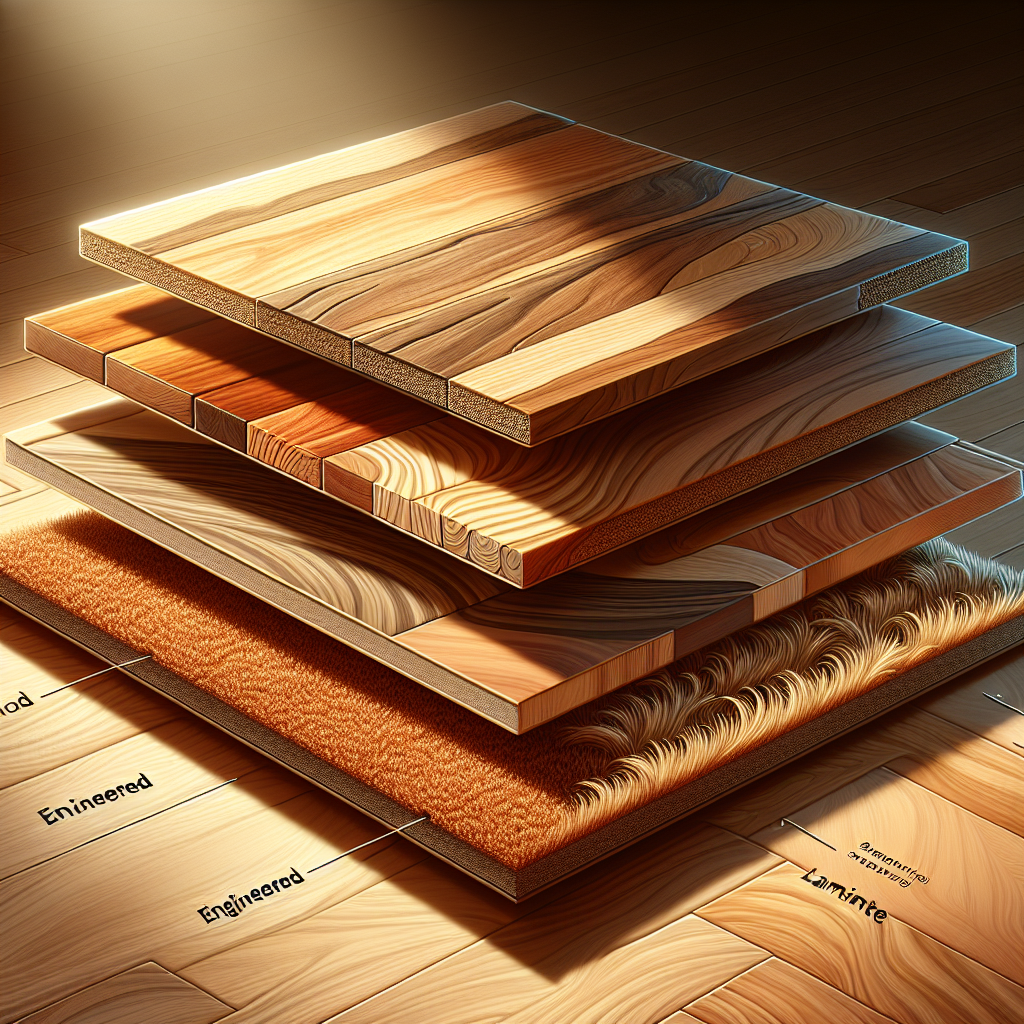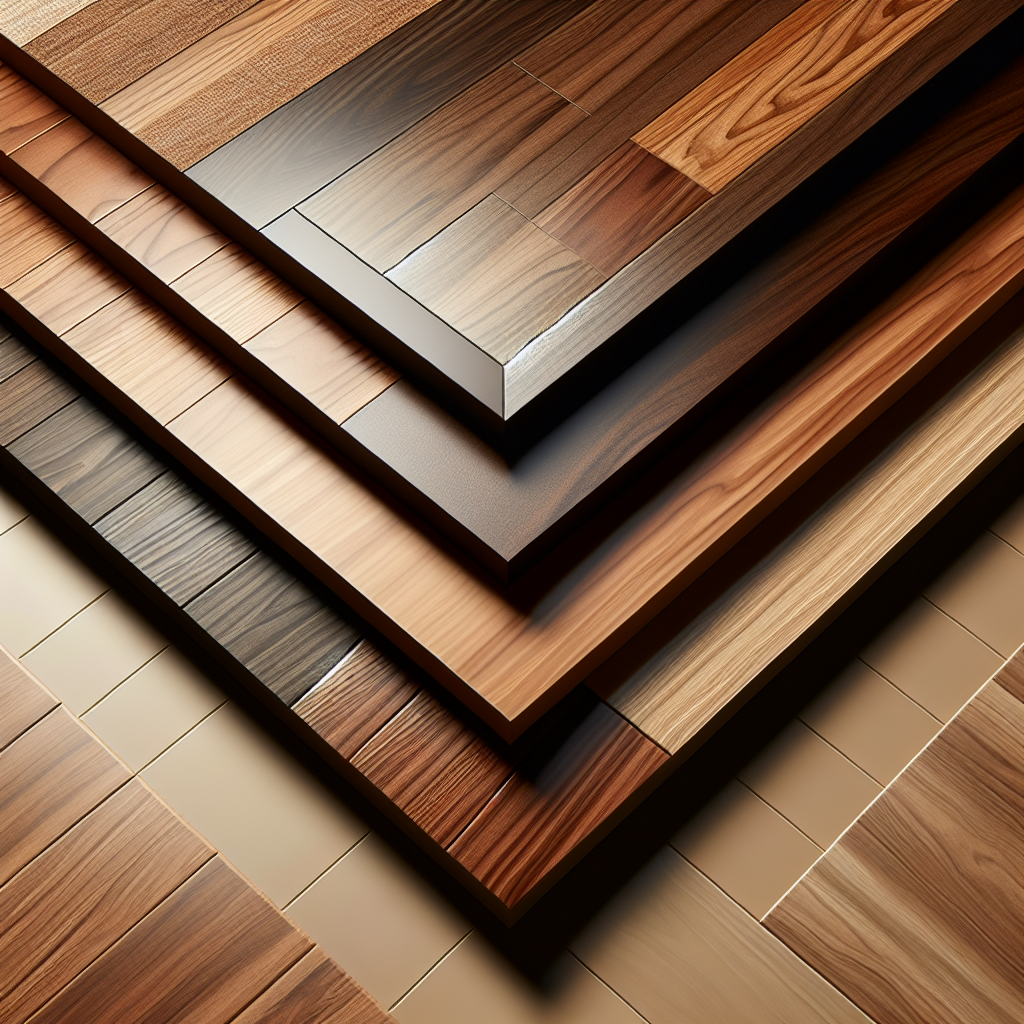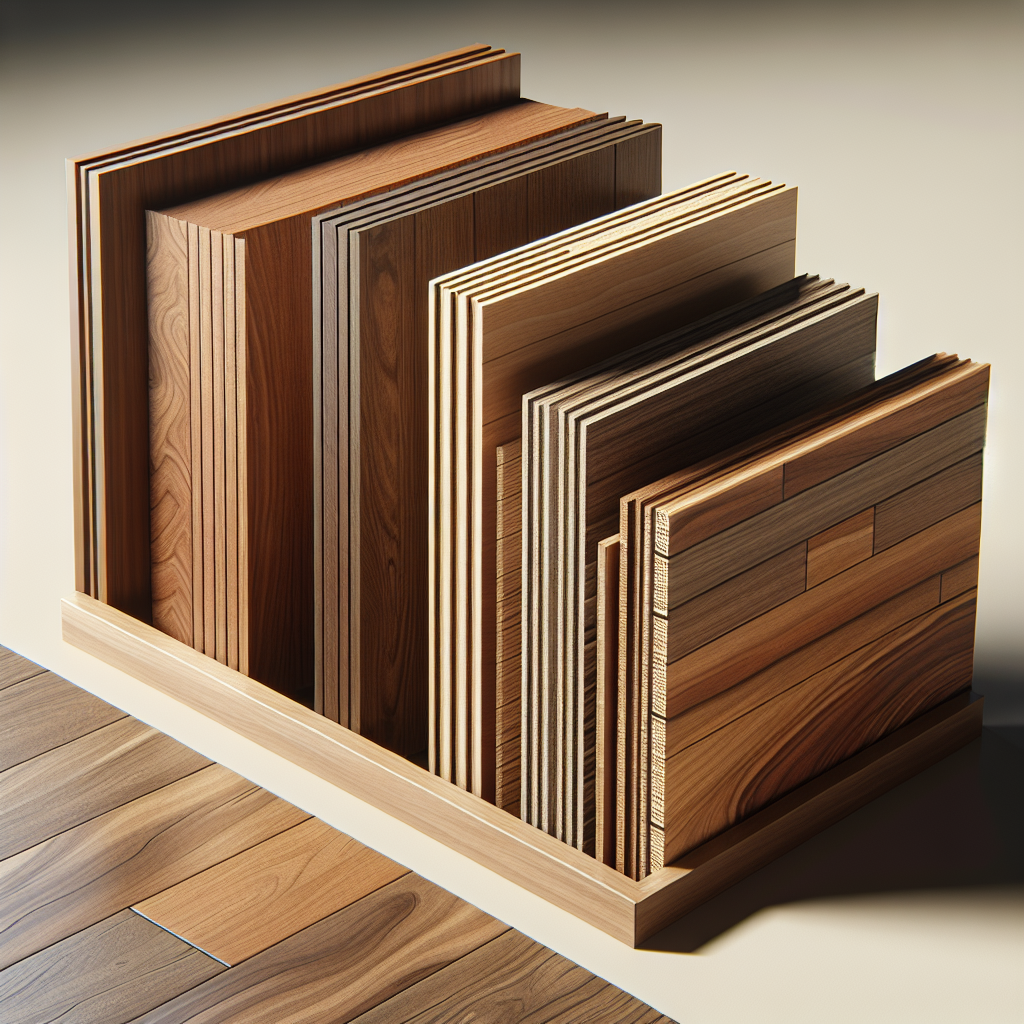
Before diving into the process of how to deep clean dirty wood floors, it’s essential to understand the type of wood flooring you have. Different wood floors require different care approaches to maintain their beauty and durability. Generally, wood floors fall into three primary categories: solid hardwood, engineered hardwood, and laminate wood flooring.
Solid hardwood floors are made from a single piece of wood and are known for their longevity and classic appeal. However, they can be more susceptible to moisture and temperature changes. Engineered hardwood floors consist of multiple layers of wood, which makes them more stable and resistant to environmental fluctuations. Lastly, laminate wood flooring is a synthetic product designed to mimic the appearance of real wood at a lower cost and with higher resistance to wear and tear.
Identifying your wood floor type is crucial as it determines the appropriate cleaning products and methods. For instance, solid hardwood floors might benefit from a specific pH-balanced cleaner that protects the wood’s natural finish, while laminate floors might require a gentler approach to avoid damage.
To ensure that you use the right cleaning techniques tailored to your specific wood floor type, you might want to consult with professionals. Visit our website to learn more and get your FREE Quote today! Click here.
Preparing Your Wood Floors for Cleaning

Proper preparation is key to effectively deep clean dirty wood floors. Before you begin, ensure that the area is free of furniture and other obstacles that can hinder your cleaning process. Here’s a step-by-step guide to prepare your wood floors for a thorough cleaning:
- Clear the Area: Remove all furniture, rugs, and other objects from the floor. This will give you easy access to every nook and cranny, ensuring a comprehensive cleaning.
- Vacuum or Sweep: Use a vacuum with a soft brush attachment or a broom to remove loose dirt, dust, and debris from the surface. Pay special attention to corners and edges where dust tends to accumulate.
- Inspect the Floor: Carefully examine your wood floors for any signs of damage, such as scratches, dents, or water stains. Identifying these issues beforehand will help you address them during the cleaning process.
- Choose the Right Cleaning Supplies: Based on the type of wood floor you have (as discussed in the previous section), select the appropriate cleaning products. Opt for eco-friendly and pH-balanced cleaners that are specifically designed for wood floors.
- Test in a Small Area: Before applying any cleaning solution to the entire floor, test it on a small, inconspicuous area. This will help ensure that the product does not damage or discolor the wood.
By following these steps, you’ll create an optimal environment for deep cleaning, allowing you to achieve the best results without risking damage to your wood floors. Taking the time to prepare properly will make the actual cleaning process more efficient and effective.
Essential Tools and Products for Deep Cleaning

To deep clean dirty wood floors effectively, having the right tools and products is crucial. Equipping yourself with high-quality supplies will ensure that you can tackle even the toughest grime and restore the natural beauty of your floors. Here are the essential tools and products you’ll need:
- Microfiber Mop: A microfiber mop is gentle on wood floors and excellent at trapping dust and dirt. Its soft fibers won’t scratch the surface, making it an ideal tool for both dry and wet cleaning.
- Vacuum Cleaner with Soft Brush Attachment: A vacuum cleaner fitted with a soft brush attachment can easily remove loose dirt and debris from the floor without causing damage. This is particularly useful for cleaning edges and corners.
- Wood Floor Cleaner: Choose a high-quality, eco-friendly wood floor cleaner that is pH-balanced and specifically formulated for wood surfaces. Avoid using harsh chemicals as they can strip the finish and damage the wood.
- Bucket: A sturdy bucket is essential for mixing and diluting your cleaning solutions. Ensure it’s clean and free of any residues from previous uses.
- Soft Cloths or Sponges: Use soft, lint-free cloths or sponges for applying the cleaning solution and wiping down the floor. These materials are gentle on the wood and effective at removing grime.
- Soft-Bristled Brush: For stubborn stains and grime, a soft-bristled brush can help scrub the surface without scratching the wood. Opt for a brush with natural bristles for the best results.
- Protective Gloves: Wearing gloves will protect your hands from any cleaning chemicals and provide better grip on your tools.
- Dry Towels: Use dry towels to immediately dry the floor after cleaning. This prevents water from seeping into the wood and causing damage.
Having these essential tools and products on hand will make your deep cleaning process more efficient and effective. Investing in the right supplies ensures that you can maintain the beauty and longevity of your wood floors while achieving a spotless finish.
Step-by-Step Guide to Deep Cleaning

Deep cleaning dirty wood floors requires a systematic approach to ensure every inch is thoroughly cleaned without damaging the surface. Follow this step-by-step guide to achieve pristine wood floors:
- Clear the Area: Start by removing all furniture, rugs, and other items from the floor. This will give you unobstructed access to the entire surface, making the cleaning process more effective.
- Dust and Vacuum: Use a microfiber mop or a vacuum cleaner with a soft brush attachment to remove loose dust, dirt, and debris. Pay special attention to corners and edges where dirt tends to accumulate.
- Prepare the Cleaning Solution: Dilute your eco-friendly wood floor cleaner in a bucket according to the manufacturer’s instructions. Avoid using excess water, as it can seep into the wood and cause damage.
- Mop the Floor: Dip your microfiber mop into the cleaning solution, wring out the excess water, and mop the floor in sections. Move the mop in the direction of the wood grain to avoid streaks and ensure even cleaning.
- Address Stubborn Stains: For tough stains, use a soft-bristled brush dipped in the cleaning solution to gently scrub the affected area. Be careful not to use too much pressure, as this can scratch the wood.
- Rinse with Clean Water: After mopping with the cleaning solution, rinse the mop and bucket, then refill the bucket with clean water. Mop the floor again to remove any remaining cleaner residue.
- Dry the Floor: Immediately after mopping, use dry towels or a dry mop to thoroughly dry the floor. This step is critical to prevent water damage and maintain the wood’s integrity.
- Polish (Optional): If desired, apply a wood floor polish to enhance the shine and protect the surface. Follow the product instructions for the best results.
By following these steps, you can ensure that your wood floors are deeply cleaned and well-maintained. Regular deep cleaning not only enhances the appearance of your floors but also extends their lifespan, allowing you to enjoy their natural beauty for years to come.
Dealing with Stubborn Stains on Wood Floors

Stubborn stains on wood floors can be incredibly frustrating, but with the right techniques and products, you can restore your floors to their original beauty. Here’s how to tackle those pesky marks:
- Identify the Stain Type: The first step is to identify the type of stain you’re dealing with. Common stains include water marks, grease stains, ink spills, and pet stains. Knowing the type of stain will help you choose the most effective cleaning method.
- Water Marks: For water marks, gently rub the area with a soft cloth dampened with a mixture of vinegar and olive oil. Alternatively, you can use a commercial wood floor cleaner designed for water stains. Always follow the manufacturer’s instructions.
- Grease Stains: Sprinkle baking soda over the grease stain and let it sit for a few hours to absorb the grease. Then, wipe it away with a damp cloth. For tougher grease stains, use a gentle dish soap mixed with warm water to scrub the area lightly.
- Ink Stains: Dab a cotton ball or soft cloth with isopropyl alcohol and gently rub the ink stain. Be cautious not to soak the wood, as excessive moisture can cause damage. After removing the ink, clean the area with a damp cloth and dry it thoroughly.
- Pet Stains: Pet stains can be particularly challenging due to their odor and potential to discolor the wood. Use an enzymatic cleaner specifically designed for pet stains to break down the urine and neutralize the odor. Follow up by wiping the area with a damp cloth and drying it well.
- Scratches and Scuffs: For minor scratches and scuffs, use a wood floor repair kit that matches your floor’s finish. Apply the repair product according to the kit’s instructions to blend the scratch with the surrounding wood.
Remember, always test any cleaning solution on a small, inconspicuous area of the floor first to ensure it doesn’t damage the finish. By addressing stubborn stains promptly and using the right techniques, you can maintain the pristine look of your wood floors and keep them looking their best.
Maintaining Clean Wood Floors

Keeping your wood floors clean and well-maintained is essential to preserving their beauty and longevity. Regular maintenance not only enhances the appearance of your floors but also prevents damage and wear over time. Here are some expert tips on maintaining clean wood floors:
- Regular Sweeping and Dusting: Dust and dirt can act like sandpaper, scratching and dulling the finish of your wood floors. Sweep or dust your floors daily using a soft-bristle broom or a microfiber dust mop to remove debris and prevent scratches.
- Vacuuming: Use a vacuum cleaner with a hardwood floor attachment to remove dirt and debris from crevices and between floorboards. Avoid using vacuums with beater bars, as they can damage the surface of the wood.
- Wiping Spills Immediately: Water and other liquids can seep into the wood and cause staining or warping. Wipe up spills immediately with a soft, dry cloth to prevent moisture damage.
- Using the Right Cleaning Products: Choose cleaning products specifically designed for wood floors. Avoid harsh chemicals and abrasive cleaners that can strip the finish or cause discoloration. For a natural alternative, mix a few drops of dish soap with water and use it with a damp mop.
- Protecting High-Traffic Areas: Place rugs or mats in high-traffic areas like entryways, hallways, and in front of sinks to reduce wear and tear. Ensure that the rugs have non-slip backings to avoid accidents.
- Reapplying Finish: Over time, the finish on your wood floors may wear down. Reapplying a finish every few years can help protect the wood and keep your floors looking glossy and new. Consult a professional to determine the best type of finish for your floors.
- Furniture Pads: Attach felt pads to the bottom of furniture legs to prevent scratches and dents when moving furniture. Regularly check and replace the pads as needed.
By following these maintenance tips, you can ensure that your wood floors remain clean, shiny, and in excellent condition for years to come. Regular care and attention will not only enhance the aesthetic appeal of your home but also protect your investment.
Visit our website to learn more and get your FREE Quote today! Click here.



Comments (3)
How to Deep Clean Unsealed Hardwood Floors Effectively - YEG Cleaning Services
says September 30, 2024 at 1:19 am[…] it’s essential to remove any loose dirt and debris. Use a soft-bristled broom or a vacuum with a hardwood floor attachment to sweep the floor gently. Avoid using a vacuum with a […]
Discover the Best Home Rug Cleaning Machine! - YEG Cleaning Services
says October 03, 2024 at 1:01 am[…] effective and effortless cleaning experience. One of the most crucial aspects to consider is the **suction power**. Machines with higher suction power can more effectively remove dirt and moisture from your rugs, […]
🔓 ACCOUNT NOTICE - Suspicious transfer of 2.0 BTC. Cancel? > https://graph.org/Get-your-BTC-09-11?hs=c7a967f0256b819aa3c7987ea3503e2f& 🔓
says September 22, 2025 at 7:56 pmq6i278